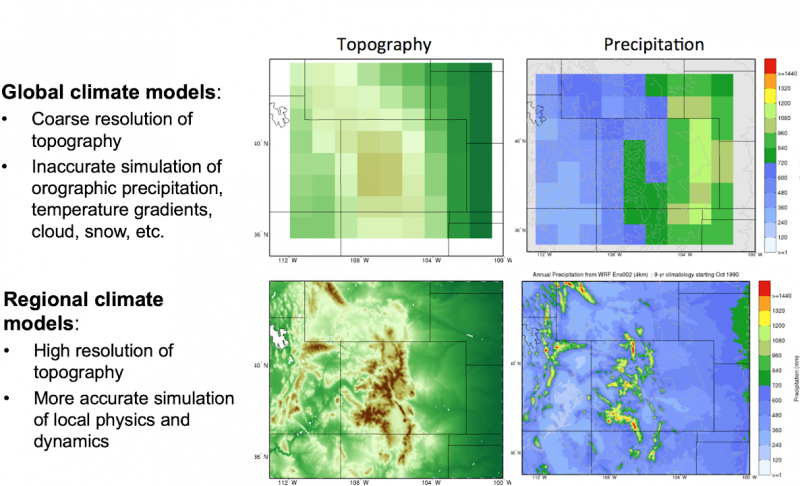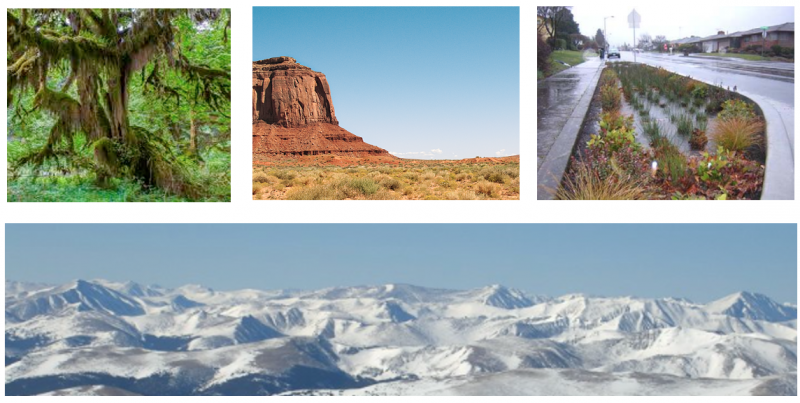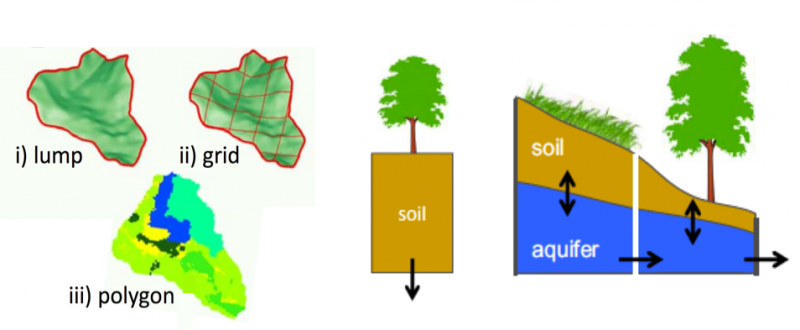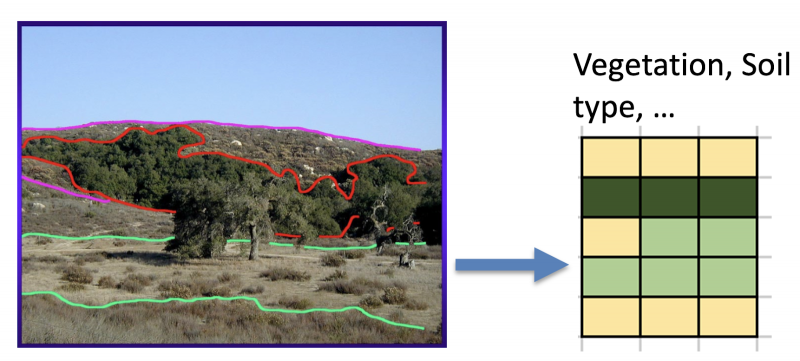Sections
Downscaling provides insights into climate impacts at more local scales. Many impact models and modelers require information (e.g., precipitation, temperature) at finer-scale than what is provided by GCM output. Downscaling helps capture local topography and associated temperature and precipitation patterns and can help to correct for known biases in the GCMs.
The graphic below shows the benefits of downscaling. In the series of maps centered on the state of Colorado, the top panels show topography and precipitation at the resolution of global climate models and the bottom panels at the resolution of regional climate models.
Downscaling is typically thought of as two different types: dynamical and statistical. There are, however, many approaches to downscaling that lie along a continuum of increasing physical complexity; some are dynamical, some are statistical, and increasingly new techniques blend dynamical and statistical downscaling.
Dynamical downscaling uses high-resolution regional climate models to simulate local dynamics over the area of interest. The global model output is applied along the model boundaries and initial conditions and the physics (e.g., energy and momentum) are then simulated. Dynamical downscaling is computationally intensive and usually requires supercomputers. This limits the number of model realizations (e.g., different global climate models, different emission scenarios) available.
Statistical downscaling statistically relates global climate model projections to fine-resolution historical observations. The (stationary) statistical relationships are then applied to future global model output. Statistical downscaling output is usually only available for a subset of variables (temperature, precipitation) which have observations adequate to develop the relationships. Statistical downscaling is computationally inexpensive, and doesn’t require supercomputers. This results in more model realizations being available.
Scientists also use these same models to understand how climate change has influenced a particular weather event in the past. Climate attribution studies evaluate the extent to which an event may have been influenced by global warming – e.g., because of warming, how much more likely is a the possibility of a storm with Hurricane Harvey’s precipitation intensity.
When selecting a downscaling technique for your project, consider the following factors while making your decision:
- How large is the area of interest?
- Where is the area of interest?
- What is the impact of interest?
- When in the future?
- Does the sequencing of events matter?
- What type of climate change uncertainty is important?
- What information is available?
Hydrology models represent energy and water fluxes in watersheds. Often, measurements are available for precipitation, temperature, and other atmospheric values in some places, but not others. Hydrology models help fill in the blanks, offering insight into processes such as streamflow, water demand from vegetation, and water temperature.
Since models are built to represent many different landscapes, processes, and spatial configurations, they may miss key elements, depending on where and how the model was developed.
Because they are designed to address specific questions, models can vary in spatial structure, how they are connected, and in model parameters. (See the images below.)
There are uncertainties throughout the modeling chain that include downscaling and hydrology models. Scientists are looking at ways to explore and reveal those uncertainties more effectively. Models can be used to capture a range of results (referred to as uncertainties) in human activities, physical processes, and natural variability.
Be aware of the many ways to evaluate future change, but don’t treat all future projections or methods equally. Consider what best fits the question you want answered.
-
Models and methods should be matched with appropriate questions.
-
Some questions focus on specific spatial scales and time domains.
-
Some questions cannot be answered definitively with current knowledge.
-
Higher resolution doesn’t always mean higher accuracy.
-
No model is perfect.




